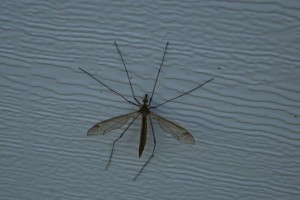
Geneva/Caracus: Expressing concerns over outbreak of yellow fever endemic in Venzuela, the World Health Organization (WHO) today stated that all yellow fever endemic and high risk regions and territories are also experiencing ongoing transmission of SARS-CoV-2.
“The addition of Yellow Fever Virus(YFV) as a co-circulating virus could pose an additional challenge for case management and infection and prevention control activities if there was a large scale yellow fever outbreak in Venezuela or neighbouring countries,” WHO stated, adding that the increased number of human cases and epizootics since August 2021, is concerning due to the persistence of high viral circulation.
Yellow fever is an acute viral haemorrhagic disease caused by the yellow fever virus (YFV) and is transmitted by infected mosquitoes of the genera Haemagogus and Sabethes
The yellow fever outbreak in Venezuela is occurring in the context of a major and complex situation, which includes the COVID-19 pandemic. The pandemic creates a risk of disruption access to health care due to COVID-19 related burdens on the health system, lack of health workers along with decreased vaccination demand due to physical distancing requirements or community reluctance.
The capacity of local laboratories and national reference laboratories may also be compromised due to the increased demand in processing COVID-19 samples. As of October 13, 2021Venezuela reported 384 668 COVID 19 cases and 4634 deaths, and currently is among the eight countries with the highest number of COVID-19 new cases in the last 24 hours in the Region of the Americas.
Venezuela is considered high risk for yellow fever with endemic virus transmission and is a priority country for the global Eliminate Yellow fever Epidemics (EYE) strategy. Vaccination coverage is suboptimal, creating a high risk for onward transmission and amplification of yellow fever among unvaccinated populations.
On October 1, 2021, the IHR National Focal Point (NFP) for Venezuela reported seven confirmed human cases of yellow fever which were investigated between September 23 and 24, 2021. All seven cases were confirmed by reverse transcriptase polymerase chain reaction (RT-PCR) at the Rafael Rangel National Hygiene Institute. Six of the seven reported cases were not vaccinated. Of these, three were asymptomatic and four developed signs and symptoms between September 20 to 24, all presented fever and one of the cases also presented with a headache, retro ocular pain, arthralgias and a skin rash. The probable location of infection was a rural parish locality, south of the Maturín Municipality in the Monagas State, which is in the northeast region of Venezuela. The first reported case was a young pregnant woman with a history of yellow fever vaccination. Of the remaining six cases, five were male and ranged between 24 and 82 years of age.To date, no deaths have been reported among the confirmed cases.
Additionally, between August 11 and October 1, 2021, 10 epizootics among non-human primates (NHP) were reported in Venezuela as part of the routine national surveillance. Seven epizootics were located in Monagas state (in the municipalities of Maturin and Aguasay (70 km from Maturin municipality) and three in Anzoátegui state (Freites Municipality, 159 km from Maturin municipality). Two of the epizootics were laboratory confirmed by RT-PCR at the National Reference Laboratory (LNR) both reported in Monagas State and eight (five from Monagas and three from Anzoátegui) were confirmed by an epidemiological link (given the time-space relationship with laboratory confirmed epizootics). Confirmed epizootics were identified at 35 km and 150 km from the urban area of Maturín within the state of Monagas.
Despite the significant efforts made to vaccinate a large portion of the population, the increasing number of human cases and the persistence and geographical spread of epizootics among NHP illustrate the potential risk of further spread to areas where YF immunization coverage is low, WHO warned.
– global bihari bureau





